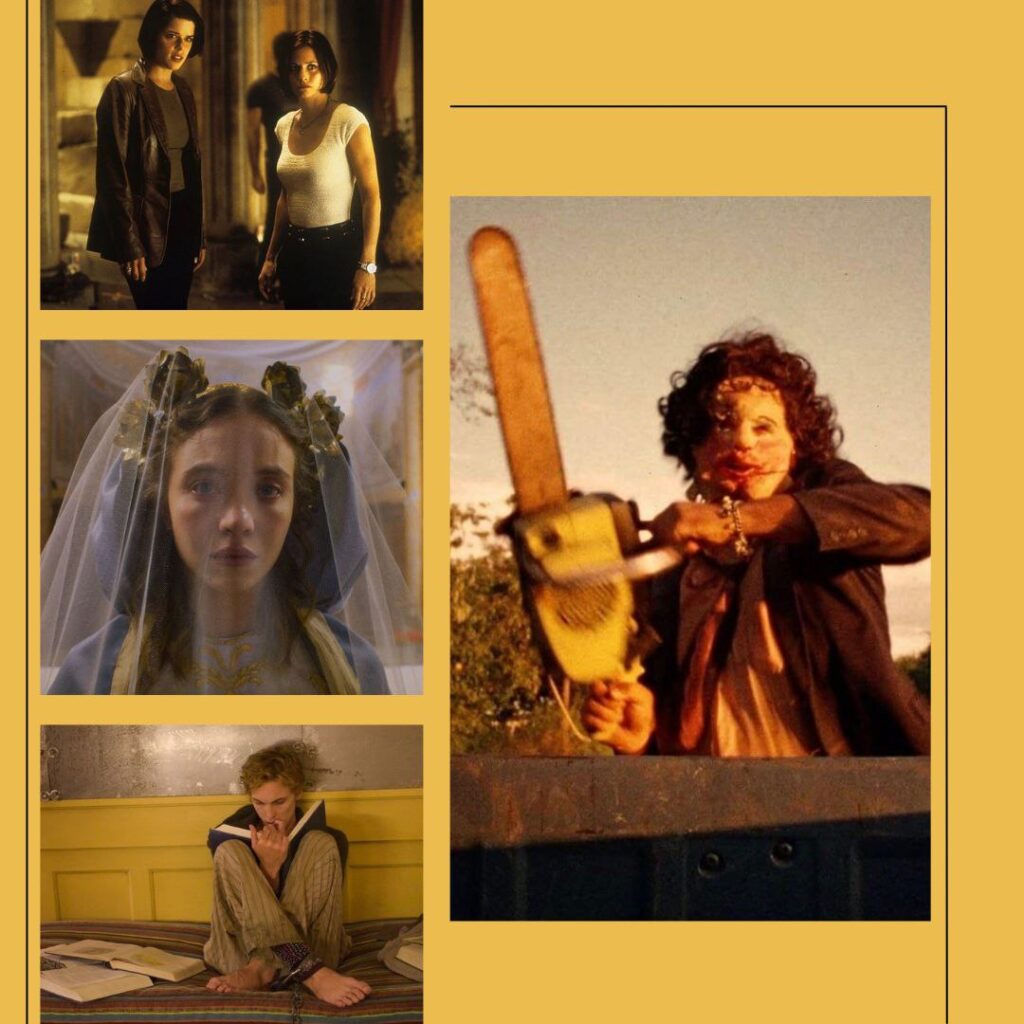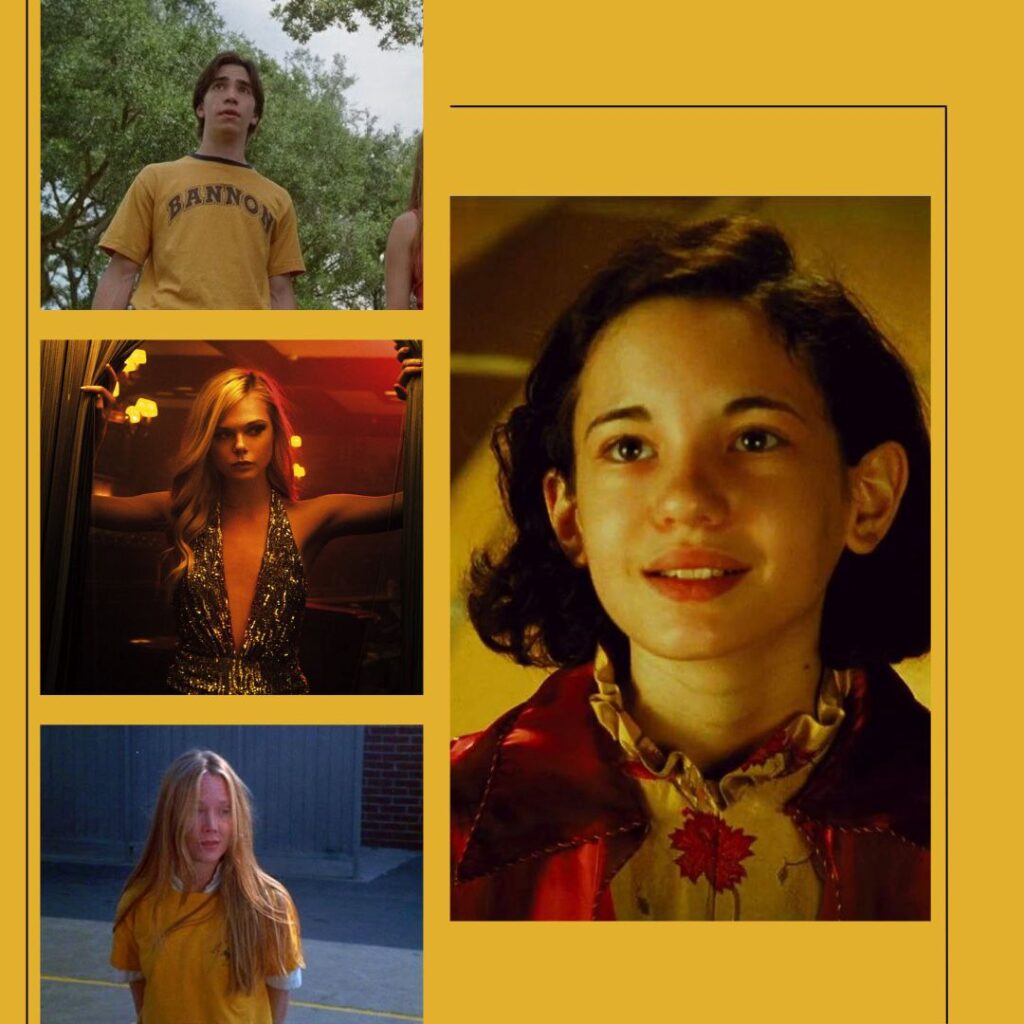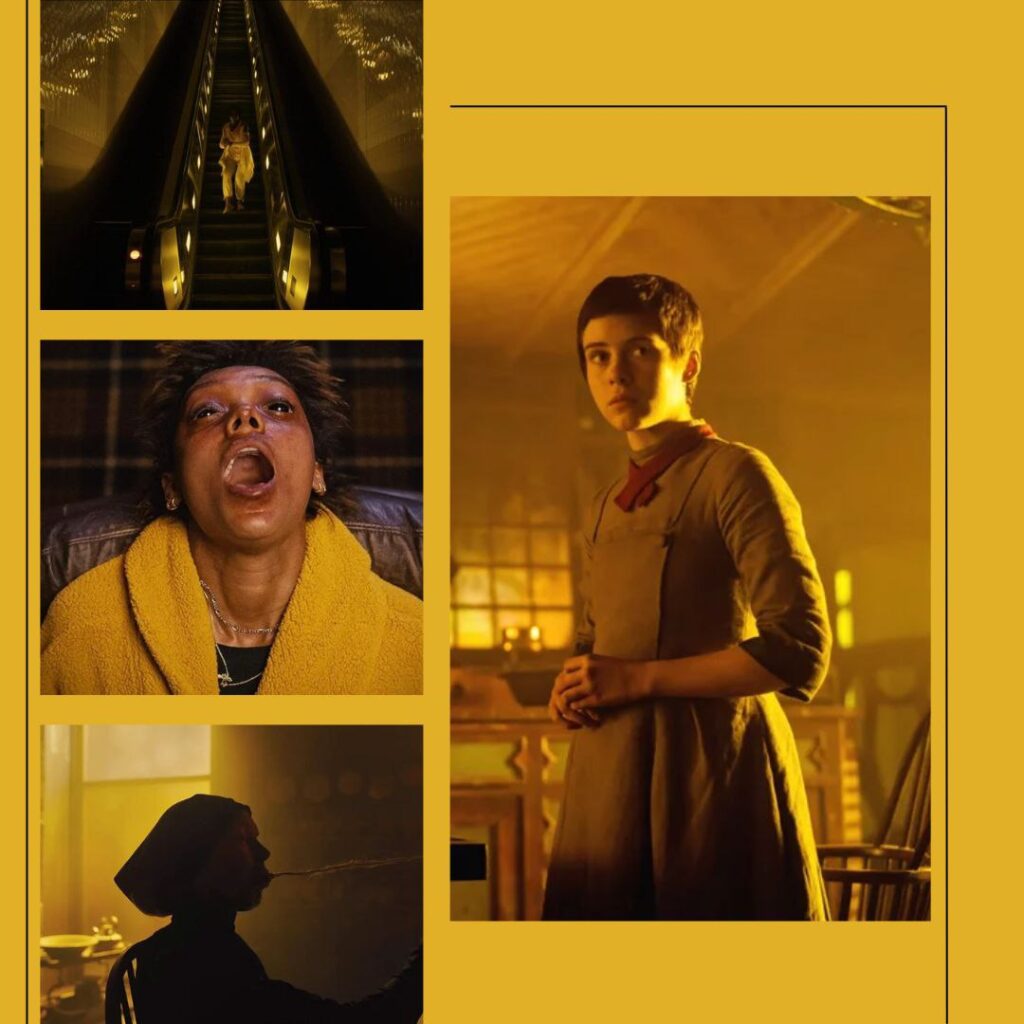Lets dig into how horror movies use color to shape emotion, build tension, and scare the soul right out of you.
We’re kicking things off with one of the most deceptively complex colors in the horror spectrum — yellow. It might look sunny and harmless on the surface, but in horror, yellow has a dark side… or five.
Let’s unpack what this tricky little color is really saying when it shows up on screen.
Impending Danger

Yellow screams: Warning!
It’s the color of road signs, hazard tape, and all those flashing lights you see in your rearview mirror right before something bad happens. In horror, yellow often appears right before the world tilts sideways — when the characters (and we) should have seen the signs.
Think of Jaws — the bright yellow inflatable raft and float ring bobbing in the waves, just before the shark attacks. Yellow here doesn’t symbolize joy — it alerts us to blood in the water.
And then there’s the cursed yellow raincoat from It. Poor Georgie’s signature look is practically a walking red flag. It might as well say, “I’m about to meet a clown, and it’s not gonna end well.”
Yellow in these moments functions as a visual highlighter for horror — marking characters and spaces for doom before they even realize it.
Warmth and False Hope
Yes, yellow can still be warm, cozy, and sunny… at first.
It’s the color of light through your window on a safe morning. Of childhood. Of hope. But in horror, yellow rarely gets to stay innocent for long.

Often, yellow is used to lull us into a false sense of security — a warm tone that sets us up for the fall. Think of sun-drenched fields that hide a cult (Midsommar, we’re looking at you), or golden lighting that turns sickly once the truth creeps in.
Yellow offers hope… just long enough for horror to snatch it away.
Wealth, Power, and Fate
Yellow = gold. And gold = power.
In some horror films, yellow carries the symbolism of royalty, destiny, or divine status. It’s a color of high stakes — not because it’s scary itself, but because of what it represents.
In Pan’s Labyrinth, yellow appears in key moments to signal the protagonist’s path toward her true identity as a princess. The warm glow of yellow becomes a magical guide — something tied to fate and higher calling.
In this context, yellow isn’t danger — it’s destiny.
Madness and Mental Decay
Yellow has long been associated with insanity, especially in closed, sterile, or institutional spaces.
Ever since the wallpaper in The Yellow Wallpaper (yes, that’s a real 1892 horror short story), the color has been linked to claustrophobia, obsessive thought, and the descent into madness.
In films that feature yellow-tinted hospital walls, dim yellow lighting, or rooms painted in sickly beige-yellow hues, the implication is clear: someone’s mind is starting to crack.
This isn’t the warmth of a sunrise. This is the flickering yellow bulb in a place where reality no longer holds.

Decay, Disease, and Death
And then there’s the darkest reading of yellow: rotting flesh, jaundice, decomposition.
It’s the color of illness, of the body breaking down, of age catching up. A character might not be bleeding, but their skin is yellowing — and we know what that means. Whether it’s literal or metaphorical, yellow can indicate that someone is not long for this world.
Horror doesn’t need buckets of blood when a character just looks… off. A sickly yellow pallor can be more unsettling than any scream.
Final Thoughts: Yellow Is a Liar
In horror, yellow is never just cheerful. It can be a warning or a trick, a beacon or a trap. It might promise sunshine, but it often delivers something colder — and far more terrifying.
So the next time a character steps into a warm yellow light, don’t get comfortable.
That glow might be the last good thing they ever see. Let me know which color you’d love to explore next. Green envy? Blue sorrow? Or maybe the blackest black of them all?
